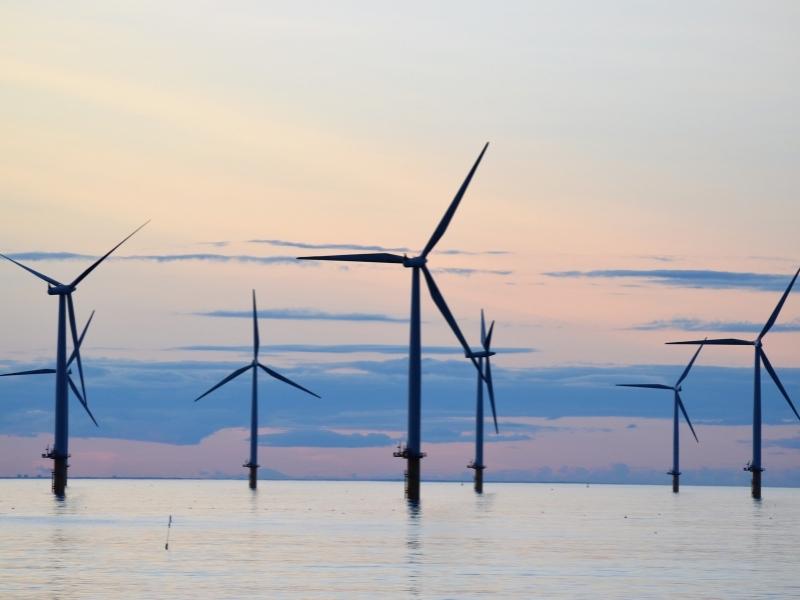Alternative sources of energy production are becoming more and more common as climate change continues to affect the planet and its ecosystems. Wind turbines are a resourceful way to harness wind power to generate electricity, but what if the turbines aren’t turning?
Wind turbines, usually installed near each other on a “wind farm,” connect to the electric power transmission network to deliver power where it’s needed. When working, they’re a renewable energy source with low greenhouse gas emissions.
Here are some of the essential questions we’ll answer, and more;
- What stops wind turbines from turning?
- How to work your wind turbines?
- What are the essential parts of a wind turbine?
- What are the disadvantages of wind energy?
Continue reading for how to prevent your turbines from stopping and the advantages of using renewable wind energy.

Why Aren’t Wind Turbines Turning?
Wind turbines stop turning for two reasons. First, the mechanical aspect of the wind turbine needs maintenance. Second, there isn’t enough wind for the wind turbine to be turning. Alternatively, there’s too much wind, and allowing the turbine to spin would be unsafe.
Mechanical Issues
Wind turbines need preventative maintenance and repair work like most energy generation equipment. With the help of a skilled wind tech (wind turbine service technician), wind turbines can last between 20 and 25 years before needing to be replaced.
Common mechanical issues for wind turbines include:
- Gearbox failure
- Blade failure (the most common)
- Generator failure
A larger blade can increase the power generated by the turbine, but it can be more susceptible to cracking and erosion from pressure or damage from weather.
Too Much or Not Enough Wind
Wind turbines need a speed of 9 miles per hour to turn. Without the wind, the turbine doesn’t encounter the force it needs to turn and cannot generate energy. However, most turbines can only handle wind speeds of 100-180 miles per hour or less before risking damage.
If a wind turbine is left on during an intense storm or weather event where winds reach over 100-180 miles per hour (less for smaller turbines), the turbine can be damaged or destroyed. Often turbines have an automatic braking system installed to prevent this.
How Do Wind Turbines Work?
Wind turbines utilize wind power to generate energy, which is turned into electricity and transferred to wherever it’s needed. Wind turbines are installed in groups called wind farms and connected to the national power grid to develop a large amount of energy.
Wind Hits the Turbine Blades
The turbine has three blades that are blown and lifted by the wind. These blades capture the energy that will eventually be transferred to the power grid.
The turbine blades are designed similar to an airplane’s wings, meant to be lifted and pushed by the wind regardless of the rotation angle.
Energy is Transferred to the Gearbox
The wind turbine blades are connected to a central shaft, which is connected to a gearbox. Since the main shaft the blades are on rotates too slowly to generate energy on its own, the gearbox helps to increase the torque or the twisting force that causes rotation.
Electricity and Power
The gearbox increases the rotation and forces the energy into a rotor, spinning an electromagnet in the turbine’s generator. This generator creates the energy and converts it from mechanical wind energy into electricity. From there, the energy flows into the transformer.
What Are the Important Parts of a Wind Turbine?
As we discussed, a wind turbine comprises of many parts that work together to generate mechanical energy and convert it to electricity. Those parts each have an individual role in creating the energy we need and include everything from the blades to the transformer.
Rotor Blades and Central Shaft
The turbine’s rotor blades are the most identifiable part of the wind turbine. Almost all turbines have three rotor blades connected to a central shaft. The main shaft is the long axle that turns with the rotor blades and runs through the nacelle and gearbox.
Nacelle and Gearbox
The nacelle is the main body of the wind turbine. It sits directly behind the blades and on top of the tower, the pole that holds up the turbine. Inside the nacelle is the gearbox, which changes the low-speed energy of the blades and shaft into a speed that can drive the generator.
Generator and Transformer
You can find the generator behind the nacelle on top of the tower. It functions by converting kinetic energy created by the rotor blades and driveshaft into electrical power. At the bottom of the tower is the transformer, which transmutes the energy to a higher voltage to be used.
What Are the Pros and Cons of Wind Energy?
Wind power is one of the fastest-growing alternative energy sources globally, but that doesn’t mean there aren’t advantages and disadvantages to using it. We’ve already discussed maintenance and repairs. Let’s dive into the biggest pros and cons of using wind power.
Advantages
Firstly, wind power is a clean fuel source known as “clean energy.” Clean energy means creating it doesn’t pollute the air around the plant, and it doesn’t need fossil fuels like coal to be made. It also doesn’t produce “atmospheric emissions” and doesn’t contribute to greenhouse gases.
Wind power is also renewable. Unlike many power sources, wind power is supplied by the Earth’s rotation, the sun, and the wind. Wind power will be usable until the Earth stops rotating or the sun and wind cease to be, which are unlikely circumstances.
Disadvantages
It isn’t cost-effective everywhere since wind speeds and regularity change from region to region. In an environment where the wind is usually calm or rare, wind turbines would cost more than regular depletable energy sources.
Wind farms can also impact local environments and wildlife. Though they don’t create pollution, wind farms require land, and birds, bats, and other flying creatures have trouble avoiding wind turbines placed in their ecosystems.
Sources




